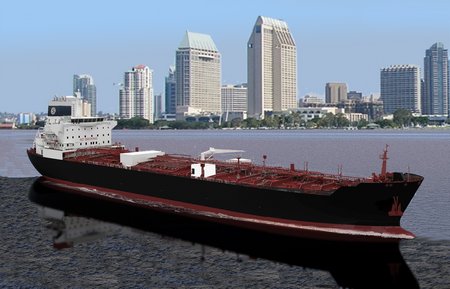GD NASSCO Starts Construction on Fourth American Petroleum ECO Tanker – May 11, 2015– San Diego, USA (Techreleased) – General Dynamics NASSCO signaled the start of construction of a fourth “ECO” tanker to be built for American Petroleum Tankers at a steel cutting ceremony on Friday, May 8, at NASSCO’s San Diego shipyard. U.S. Rep. Susan Davis helped signal the beginning of construction by pressing a button to cut the first piece of steel.

As part of a five-tanker contract, the new ECO tankers solidify a mutual commitment between General Dynamics NASSCO and American Petroleum Tankers to design, build and operate innovative and increased energy efficient and fuel-saving products. Each of the five 50,000 deadweight ton product carriers to be constructed by NASSCO will be LNG-conversion ready and will carry 330,000 barrels of cargo. With a specialized ECO design, the tankers are more energy efficient and incorporate environmental protection features, including a Ballast Water Treatment System.
“These Jones Act-qualified tankers are some of the most energy-efficient, fuel-saving and cost-effective tankers in the world. They are also instrumental in providing high-quality, good-paying jobs,” said Kevin Graney, vice president and general manager of General Dynamics NASSCO. “NASSCO is leading the way in America for designing and building new and innovative green ship technologies.”
The five-tanker contract has been instrumental in helping to sustain and grow the company’s local workforce. NASSCO began construction on the first tanker under the current contract in September 2014.
“We are very excited to be starting construction on our fourth tanker at General Dynamics NASSCO. We look forward to taking delivery of another highly fuel-efficient and environmentally-friendly vessel that will provide first class service to our customers,” said Rob Kurz, president of American Petroleum Tankers.
The construction and operation of the new vessels are aligned with the Jones Act, requiring ships carrying cargo between U.S. ports to be built, crewed and owned by the U.S.







